Japanese Credit Cards
Providing a convenient, cashless way to shop in-store or online, credit cards are a fundamental necessity of modern life.
However, for expats in Japan, the hassle and disappointment often experienced when dealing with the stringent Japanese banking system forces many to forgo this essential service.
But it doesn’t have to be this way! While there is no 100% sure-fire method, with some careful planning, ample patience, and clear guidance, the possibility of owning a credit card in Japan will become substantially higher!
Why Is It So Hard to Get a Japanese Credit Card?

Operating by a strict set of unwavering, yet often ambiguous criteria, many Japanese companies and banks are highly conservative. As an expat in Japan, any credit history you’ve built before moving is worthless, and your impermanent status automatically makes you high risk. Based upon these concerns, plus others, many credit card companies are reluctant to take on foreign customers.
What Do I Need to Apply For a Japanese Credit Card?
The following are the absolute fundamentals you’ll need when applying. If you are missing one or several of these, you should try to get more settled in your Japanese life before taking on a credit card.
- Residence visa (the longer the better)
- Japanese bank account
- Japanese address
- Employment in Japan (employment outside Japan may be possible, but will be a mark against your application)
- Income
- Japanese Phone number
- Email address
What Will Make My Application Stronger?
The above criteria is simply the entry point for application. Even if you’ve ticked all the boxes, there’s a good chance your application will be denied without several of the following:
- Stable/high income
- Spouse visa/permanent residency
- Japanese partner with a stable job
- Having a “seishain” (permanent full-time) work contract
- Working at the same company for over a year
- Working for a large, reputable company
- Having a work phone number
- Owning a home in Japan
- No outstanding debt
- A flawless credit record in Japan
- Japanese fluency (if applying in-person)
- Several forms of ID in Japanese (driver’s license, My Number card, etc.)
- Living in Japan for a lengthy period of time
- Having no rejections from a credit card company previously in Japan (companies can access this information)
- No pending applications at another credit card company (again, companies can see this, and applying for several at once apparently looks bad)
Easy-To-Get Credit Cards for Foreigners in Japan

So, you’ve met the criteria, now it’s time to apply! You can choose to apply online via the company’s website or in-person at a store. Like many Japanese websites, credit card websites are rarely user-friendly and are highly sensitive to character input. Don’t be frustrated if you get multiple error messages, especially when entering your name. Multilanguage services are essentially non-existent, so if your Japanese level is low, it’s best to apply online with the assistance of a fluent speaker.
There is a wealth of credit cards out there, each servicing a different lifestyle. While your choice of provider is ultimately up to you, here are some of the most popular!
Rakuten Card:

Pros: Stellar points system, which can be collected even through utility bills, along with student-friendly options and online application. No annual fees and free overseas travel insurance. A very popular choice.
Cons: Website is wordy and difficult to use.
Points: 1 pt (= 1 yen ) / 100 yen spent
Application page: https://www.rakuten-card.co.jp/card/
SAISON INTERNATIONAL
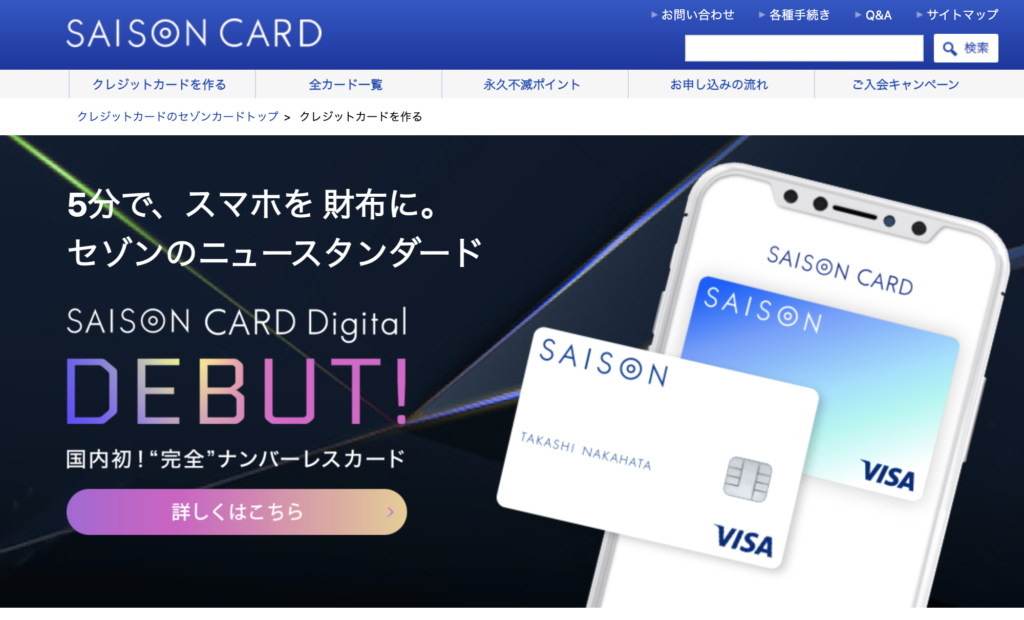
Pros: No annual fees and a never-expiring points system. A reputation for accepting foreign applicants. You can apply online and get the card delivered, or visit one of their numerous stores and booths scattered across Japan. Their website is appealing and user-friendly.
Cons: Points received are lower than some competitors.
Points: 1 pt (= 5 yen) / 1000 yen spent
Application: https://www.saisoncard.co.jp/
Orico Card
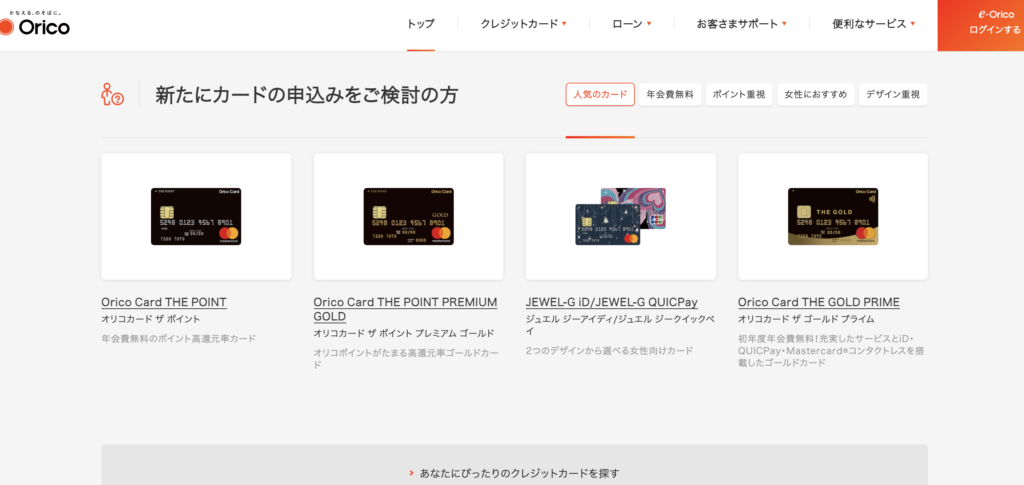
Pros: No annual fee, a good points system, and can be connected with the iD or QuicPay cashless payment systems. Website is user-friendly and straightforward.
Cons: Website requires you to register your bank online, which can sometimes be tricky.
Points*: 1 pt (= 1 yen) / 100 yen spent (Orico Point) or 1 pt (= 100 yen) / 1000 yen spent (Classmile)
*point system varies by card
Application: https://www.orico.co.jp/
EPOS Card

Pros: Boasts no fees and automatic overseas travel insurance. There are also a lot of unique card designs and designer collaborations.
Cons: Application can be done online, but the website is clunky with lots of small text.
Points: 1 pt / 200 yen spent
Application: https://www.eposcard.co.jp/index.html
Aeon Card
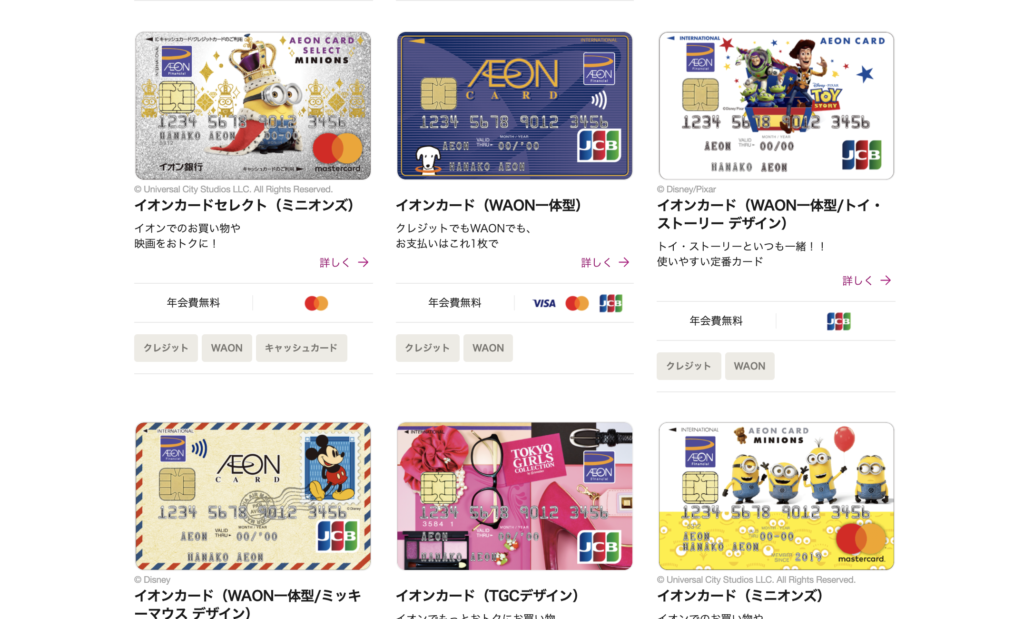
Pros: Allows you to gather points when shopping at Aeon malls and a range of other outlets. It also has the digital payment system WAON attached, with plenty of incentives to use it. There are no annual fees.
Cons: The website has some extra terms and conditions pages that are difficult to understand, but is easy enough to use.
Points: 1 pt / 200 yen spent (double at Aeon Stores)
Application: https://www.aeon.co.jp/
d-Card

Pros: Released by the ubiquitous Docomo, the d-Card has no membership fees, comes with mobile phone insurance, and allows you to collect loads of dPoints, which can be used widely throughout Japan. Can also be connected with the iD digital payment system.
Cons: Application can be done online, but the website text is small and not user friendly.
Points: 1 pt / 100 yen spent (excluding certain purchases)
Application: https://d-card.jp/st/
JCB card

Pros: As the only Japanese international payment brand, a credit card from JCB is very popular. With the JCB Card W, those under 39 at the time of application won’t have to pay any annual membership fees and will collect twice the amount of points. You can also get extra points at major brands like Amazon and 7-Eleven. The website is relatively easy to use.
Cons: Unlike Visa or Mastercard, JCB is not as widely accepted outside Japan. Website requires you to register your bank online, which can sometimes be tricky.
Points: 1 pt / 1000 yen spent
Application: https://www.jcb.co.jp/ordercard/kojin_card/os_card_w.html
Your Own Bank
If you’re earning money in Japan, a Japanese bank must have approved you, so why not try applying for their credit card? They’ll have access to your information and banking history, making the whole process easier! Of course, their credit card division will be much more stringent than their banking, so don’t expect this to be a guaranteed thing.
Using a Credit Card in Japan
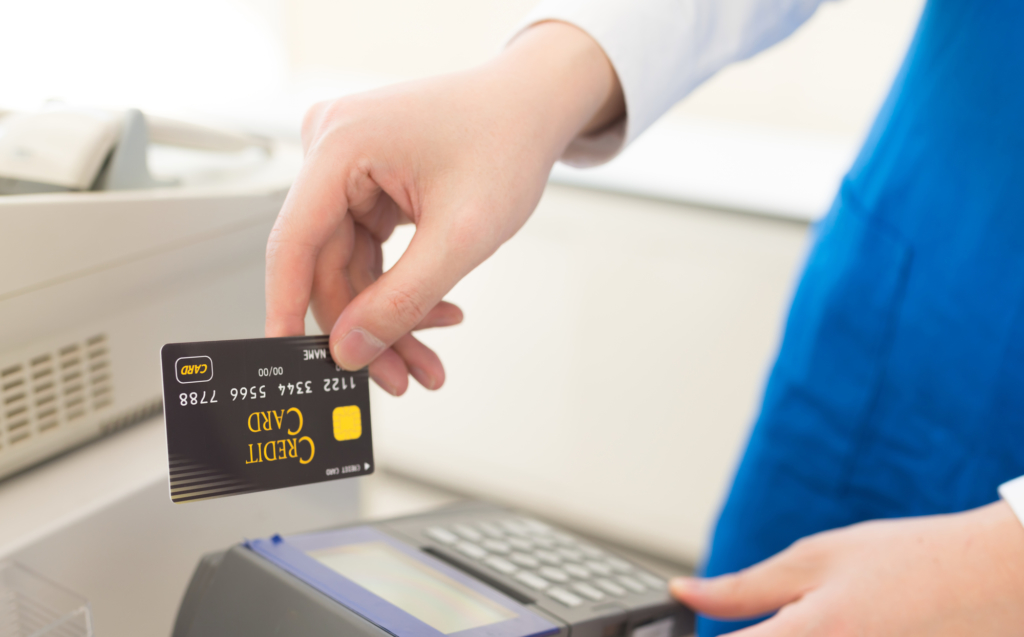
You managed to get a credit card! Well done! Now it’s time to enjoy your success and use it! As per any country, you can only use a credit card if the service is available. As Japan is still a largely cash-based society, don’t rely on it too much – especially at traditional businesses. If you can use it, here is how the transaction will likely go down:
Lump Sum Payment
Once you’ve presented your card, the clerk will likely ask whether you’ll be making a lump sum payment. This means you’ll pay everything back the following month.
It will generally sound like “一括でよろしいですか?” “Ikkatsu de yoroshii desuka?” From which most will answer “hai.” You will then either enter your PIN or sign a receipt, depending on the machine.
Unlike the monthly payment plans you may be used to with credit cards overseas, most credit cards in Japan require full payment the following month, which will be the case if you choose to make a lump sum payment. This means that buying expensive items you don’t have money in the bank for is super risky! It’s better to think of your Japanese credit card as a convenient way to make payments and earn points rather than as a method of taking out a loan to buy something you don’t have money for yet.

Payment in Installations
In addition to paying all at once, you can also ask for “bunkatsu barai” (分割払い), which splits up the amount into several smaller payments each month. The number of times you can split it depends upon the provider, with increments ranging from 3 to 36 months. While this may sound tempting, each payment incurs an additional interest fee, making the final cost higher than the initial. Confirm the conditions thoroughly before selecting this option.
Ribo Payment
A shortened katakana-style version of the English word ‘revolving,’ ribo(リボ)payment allows you to set up a monthly payment plan, essentially making it the same as a typical overseas credit card. This must be arranged with your provider in advance, often via the website, so we recommend getting familiar with your credit card’s site.
Point Systems on Credit Cards

One of the main appeals of a Japanese credit card are their point systems. Even when making simple, everyday purchases or paying bills, you can accumulate points which can then be used as money. Each company has their own point rate and system, so take this into account when deciding. Some points can be used instantly and widely, while others are delayed and limited to certain products or services.
In addition, many companies have tie-ins with major shopping stores, brands, and services, allowing you to gain points and receive discounts on your favorite brands! Some also come with free travel insurance and an ETC card, allowing automatic payment when driving on Japan’s toll roads.
Alternatives to Credit Cards

So, you got rejected – again! Sometimes it’s better to save the stress and just move on. Luckily, there are alternatives out there offering similar services without the headache.
Debit Cards

While not as popular as overseas, the use of debit cards is steadily rising in Japan. Directly linked to your bank account, you can pay via a credit card machine using your own money through providers like Mastercard and Visa. First, check to see if your bank offers a debit card program. If they do, it should be fairly easy to apply in-person. If not, there are numerous alternatives, including Seven Bank, who boast an easy-to-understand online application with English service.
Suica/Pasmo/IC Cards
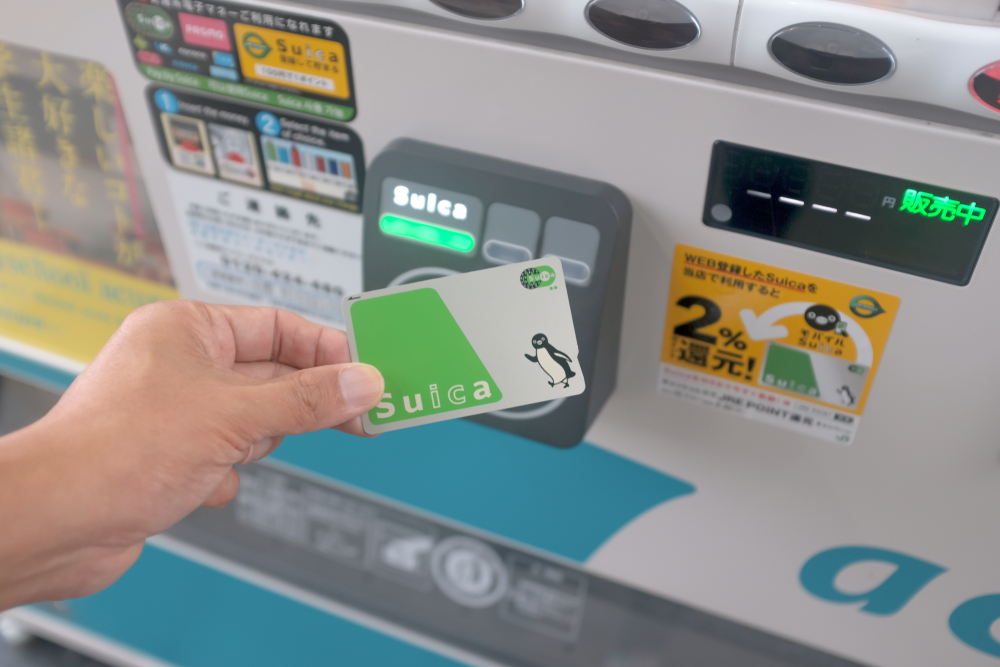
Your Suica, Pasmo, or other IC Card can be loaded with money and used at stores across Japan. An IC card requires no ID and can be easily purchased and recharged via the ticket machine at major train stations. You can also register your IC Card, even at the machine, allowing you to cancel the remaining balance if you lose it. As of 2019, approximately 750,000 stores accepted Suica, making it an appealing alternative to credit cards! Read here for more information.
Payment Apps:

In recent years, the rise of smartphone and other cashless payment services in Japan has been remarkable. PayPay, LINE Pay, dBarai, QUICPay, iD, Rakuten Pay, au Pay, Merpay, WAON…and even more! Simply choose one, download the app, register yourself, connect it to your bank and top it up with cash. If you don’t have online banking, many can be charged through certain ATMs.
You can find out if a store accepts your payment app by looking for a label or sticker around the register. If you can’t find one, simply ask the staff. If you can use it, ensure your balance is topped up, open the app, and present the barcode to the staff serving you. They’ll either scan it or, if it’s a QR code, ask you to touch your phone’s screen on their machine. Many of these cashless services have promotion campaigns, some literally giving out free money in order to hook customers. Check out online if there are any deals going on now – you don’t have to use the service again and there are no fees!
Get Swiping!

We hope this article has helped clear up the murky world of Japanese banking and credit cards. At the end of the day, whether you succeed or not in your cashless quest is mostly up to luck, so don’t feel bad if you miss out! If you keep trying, you’re bound to find a credit card or cashless alternative that suits and accepts you!
If you want to give feedback on any of our articles, you have an idea that you’d really like to see come to life, or you just have a question on Japan, hit us up on our Facebook!
The information in this article is accurate at the time of publication.

